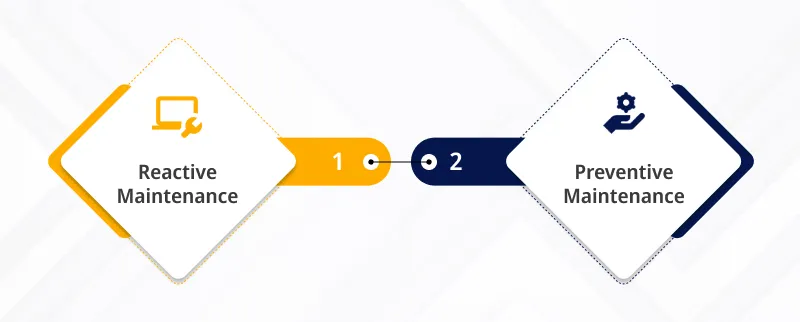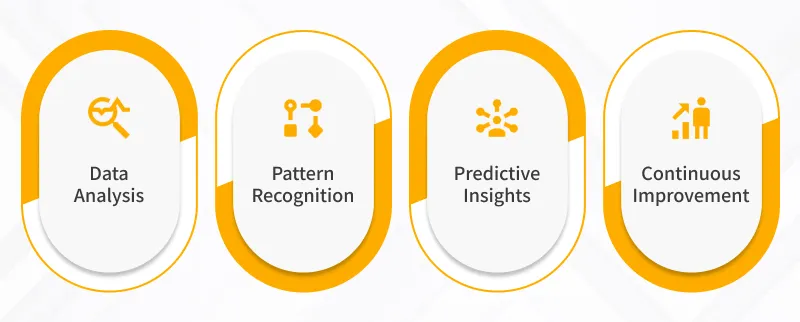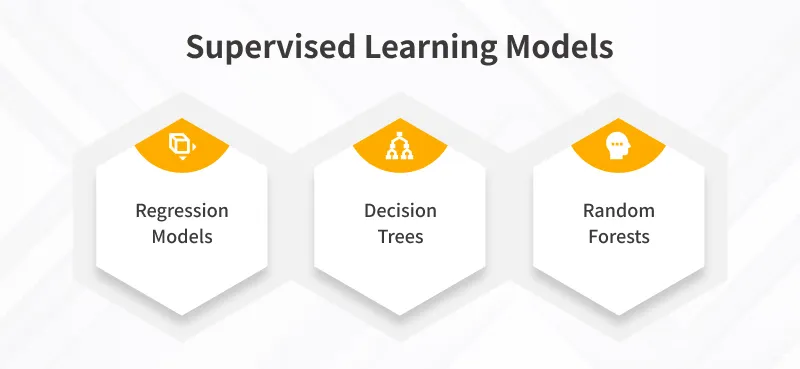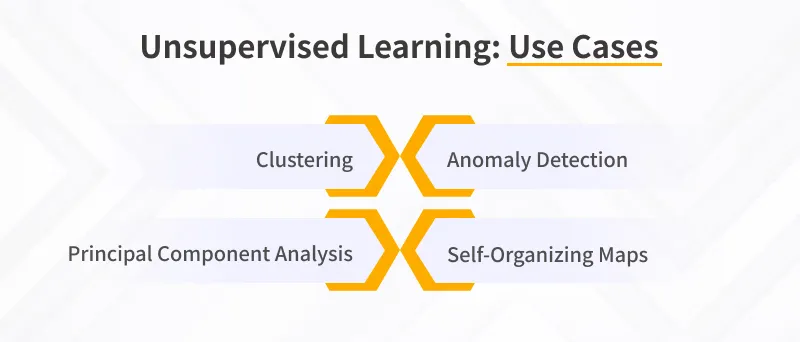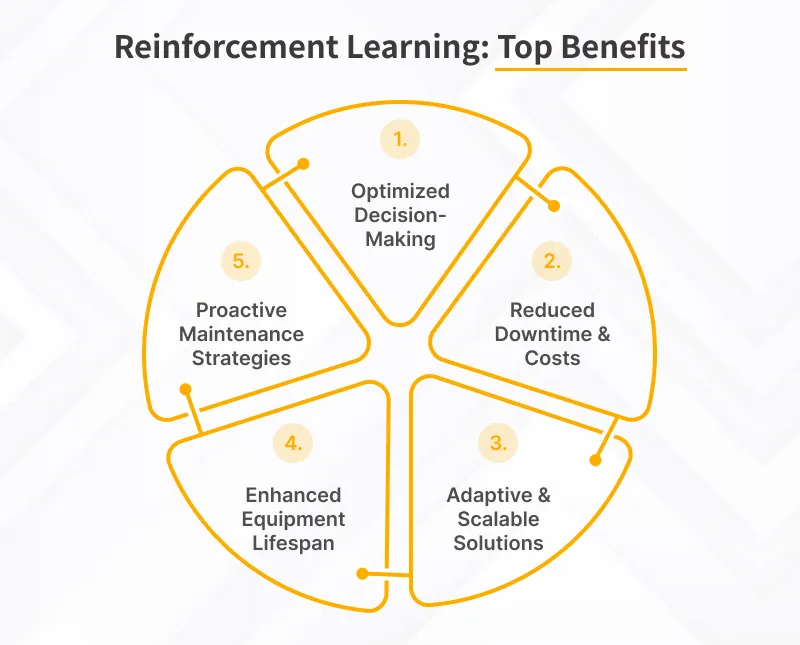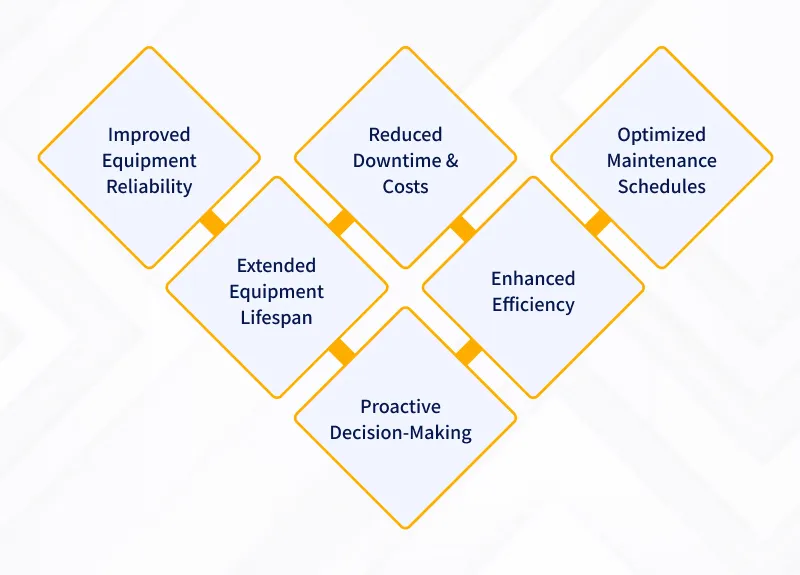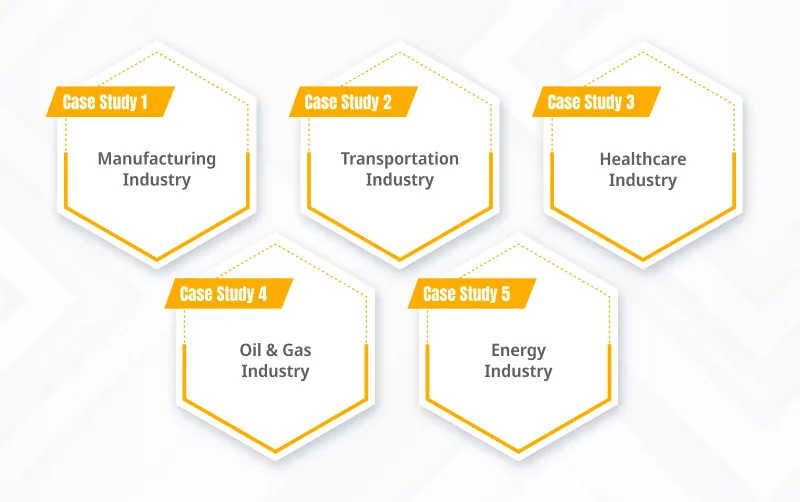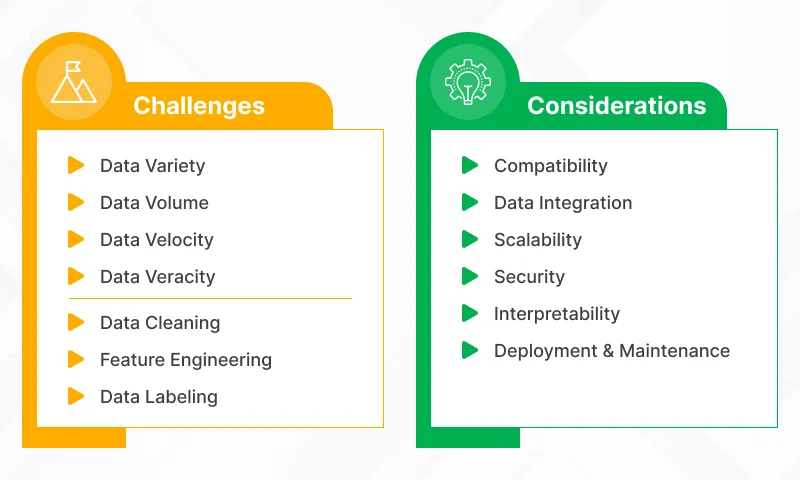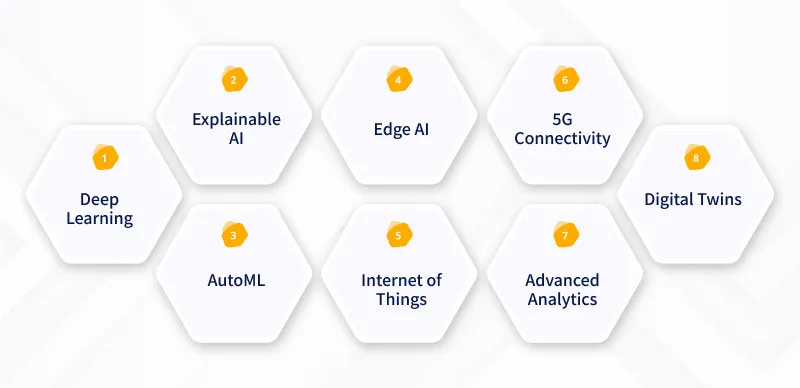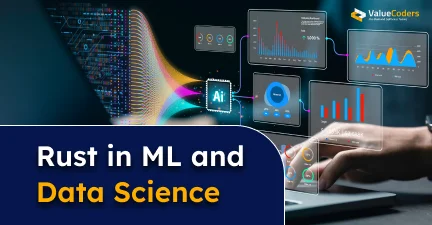Do you know?
Every year, unplanned maintenance & equipment downtime cost businesses approx. billions up to $50 billion annually in the manufacturing sector solely.
Predictive maintenance is emerging as a powerful strategy to beat these losses by forecasting equipment failures before they occur. This further ensures smoother operations & reduced costs.
Machine learning is the core point of this revolution, which offers incredible accuracy & timeliness in predicting maintenance needs.
Let’s check out this blog post to see how machine learning is resolving predictive maintenance issues and how it is providing industries with the advanced tools to stay ahead of potential issues & maintain seamless operations.
Understanding Predictive Maintenance
Predictive maintenance is considered as a forward-thinking approach to equipment management that uses data analytics consulting services to predict when maintenance operation should be performed. It monitors the actual condition of equipment to determine the accurate time for servicing.
This strategy ultimately reduces downtime & operational costs by addressing potential maintenance issues before they result in equipment failure. This also ensures that maintenance is conducted only when it is truly required.
Challenges with Traditional Maintenance
Traditional maintenance methods viz. reactive and preventive maintenance, have some limitations that arise the need for predictive approaches.
- Reactive maintenance occurs when repairs are made after equipment has already failed.
This methodology often results in higher long-term costs & operational inefficiencies.
- Secondly, preventive maintenance involves performing regular, scheduled maintenance regardless of the equipment’s condition. However, it does not account for the actual wear & tear on the equipment.
The above challenges represents the inefficiencies of traditional maintenance methods and the need for more advanced i.e. predictive strategies. The aim of solutions for predictive maintenance is to optimize maintenance schedules & resource allocation.
Discover the power of machine learning in predictive maintenance with us.
Role of Data in Predictive Maintenance
Data plays a good role in enabling predictive maintenance, implementing maintenance strategies from reactive to proactive.
Sensors & monitoring systems installed on equipment collect vast amounts of data on various parameters such as
- Temperature
- Vibration
- Operational performance
Advanced analytics & machine learning algorithms process this data to identify patterns/ anomalies that indicate these potential issues.
By analyzing historical & real-time data, these systems can predict when equipment is likely to fail & recommend timely maintenance.
Also Read – Exploring Innovation: Machine Learning App Ideas
Machine Learning for Predictive Maintenance
Machine learning tech can be defined as the subset of Artificial Intelligence technology. It mainly focuses on the algorithms development & statistical models that enable machines to learn from & make predictions.
Unlike traditional programming, machine learning allows systems to adapt to new data, identify patterns, and improve performance without being explicitly programmed.
ML for predictive maintenance analyze vast amounts of data generated by industrial equipment. Here is how it works:
- Data Analysis: ML algorithms process data collected from sensors and monitoring systems on equipment by a data analytics services company.
- Pattern Recognition: AI/ML algorithms identify patterns & anomalies in the data that presents potential equipment failures.
- Predictive Insights: Based on the patterns detected, ML models predict when equipment is likely to fail or require maintenance by using predictive algorithms in machine learning.
- Continuous Improvement: As more data is collected, ML for predictive maintenance models continuously refine their predictions, thus, becoming more accurate over time.
Also Read: Artificial Intelligence Vs. Machine Learning Vs. Deep Learning: New Ethics Of Future Advancement!
How Machine Learning can Enhance Predictive Maintenance?
ML for predictive maintenance help organizations convert their maintenance strategies from reactive to proactive.
By using ML for predictive maintenance solutions, businesses can enhance operational efficiency, achieve greater cost savings, and extend the lifespan of their equipment.
- Advanced ML algorithms analyze the historical & real-time data collected from the equipment.
- ML algorithms identify patterns, trends, and anomalies that may indicate potential issues or impending failures.
- By learning from past instances of equipment failures & maintenance records, the algorithms accurately predict when & where future issues are likely to occur.
- The predictive capability of advanced ML allows maintenance teams to schedule maintenance activities at the optimal time. This prevents unexpected breakdowns and minimizing downtime.
Utilize our machine learning solutions for proactive maintenance.
Key Machine Learning Techniques Used in Predictive Maintenance
The role of machine learning in predictive analysis is vast. Have a look at the following key techniques of ML for predictive maintenance or the types of predictive analysis:
1) Supervised Learning
Supervised learning is a type of ML approach where the model is trained on a labeled dataset. In this, each training example is paired with an output label.
In case of ML for predictive maintenance, supervised learning algorithms utilize historical data from equipment. This includes past failures & maintenance records to learn patterns and correlations.
Once trained, the model can predict future failures by applying what it has learned to new, unseen data, allowing maintenance teams to take preemptive action before an actual breakdown occurs.
Examples of Supervised Learning Models Used in Predictive Maintenance
-
Regression Models
Regression models forecast the RUL i.e. remaining useful life of equipment based on various input features such as usage hours, environmental conditions, and performance metrics.
-
Decision Trees
Decision trees help identify whether equipment is likely to fail within a certain timeframe.
A decision tree model analyze parameters like temperature, vibration, and pressure to determine whether a machine is at high risk of failure.
-
Random Forests
Random forests assess the risk of failure more accurately by considering a broader range of variables and their interactions.
2) Unsupervised Learning
Unsupervised learning is a type of ML that works with data that has not been labeled. This algorithm does not comes with explicit instructions on what to look for, but rather it find patterns & relationships within the data on its own.
In case of ML for predictive maintenance, unsupervised learning is really valuable for anomaly detection. These anomalies indicate early signs of equipment failure or other maintenance needs, even if such patterns have not been explicitly identified in the past.
Use Cases of Unsupervised Learning in Detecting Abnormal Equipment Behavior
-
Clustering
Clustering algorithms viz. k-means, hierarchical clustering, group similar data points together based on some features. It can be used to categorize different operating states of the equipment.
-
Anomaly Detection
Anomaly detection algorithms viz. isolation forests or autoencoders, are designed to identify data points that deviate significantly from the norm. These algorithms continuously monitor sensor data to track unusual patterns that may bring a problem.
-
Principal Component Analysis
PCA is a dimensionality reduction technique which convert data into a set of orthogonal components. This highlights the variance within the data. It is used to reduce the complexity of the data while retaining the most significant features.
-
Self-Organizing Maps
SOMs are a type of neural network used to produce a low-dimensional representation of data. They are particularly effective in visualizing high-dimensional data & identifying clusters and anomalies.
3) Reinforcement Learning
Reinforcement learning is also a type of ML language where an agent learns to make decisions by performing actions in an environment to maximize cumulative rewards.
Unlike supervised learning, which relies on labeled data, or unsupervised learning, which identifies patterns, RL technique focuses on learning optimal strategies through trial & error.
In case of ML for predictive maintenance, reinforcement learning is used to optimize maintenance schedules by dynamically adjusting actions according to the equipment’s condition & performance data.
Benefits of Reinforcement Learning in Adaptive Maintenance Strategies
Reinforcement learning offers powerful benefits in optimizing maintenance schedules and developing adaptive maintenance strategies. Have a look at the benefits below:
-
Optimized Decision-Making
Reinforcement learning enables the creation of adaptive maintenance strategies that can continuously improve over time. The RL agent learns the most effective maintenance actions for various conditions, leading to optimized decision-making.
-
Reduced Downtime & Costs
By optimizing maintenance schedules, reinforcement learning helps in reducing unexpected equipment failures & the associated downtime. This leads to significant cost savings as maintenance can be performed more efficiently and effectively.
-
Adaptive & Scalable Solutions
Reinforcement learning algorithms are highly adaptive. This allows them to adjust to changing conditions and new data. As the equipment’s usage patterns evolve, the RL model further update its strategies to continue providing optimal maintenance schedules.
-
Enhanced Equipment Lifespan
By proactively addressing maintenance needs & preventing failures, reinforcement learning contributes to extending the lifespan of equipment. Regular & optimized maintenance ensures that machinery operates at peak efficiency, thus, reducing wear and tear over time.
-
Proactive Maintenance Strategies
Instead of waiting for failures to occur or following a fixed schedule, RL maintenance is based on real-time data & predictive insights. This further leads to more proactive & effective maintenance practices.
Also Read: Top 21 Machine Learning Development Companies Supporting SME & Enterprises ML Adoption
Benefits of ML for Predictive Maintenance
ML for predictive maintenance provides a wide range of benefits that ultimately contribute to more efficient & effective maintenance strategies. Have a look at these advantages below:
Improved Equipment Reliability
- ML algorithms analyze historical & real-time data from equipment to detect patterns/anomalies that may indicate potential failures.
- Machine learning enables maintenance teams to address issues before they escalate by identifying the early warning signs. This improves the overall reliability of the equipment.
- ML for predictive maintenance ensures that machines operate smoothly & efficiently. This reduces the likelihood of unexpected breakdowns.
Reduced Downtime & Costs
- ML for Predictive maintenance allows for timely intervention. This minimizes unplanned downtime.
- Maintenance can be scheduled at the most convenient times by predicting when a failure is likely to occur. It further avoids disruptions to production.
- This approach not only keeps operations running smoothly but also reduces maintenance costs by preventing extensive damage & expensive repairs.
Optimized Maintenance Schedules
- ML algorithms optimize maintenance schedules by continuously analyzing equipment conditions & operational data.
- These algorithms further determine the optimal intervals for maintenance activities. This ensures that equipment is serviced only when necessary.
- This data-driven scheduling reduces unnecessary maintenance. This further saves time and resources, while ensuring that critical maintenance tasks are not overlooked.
Extended Equipment Lifespan
- Early detection of potential issues through ML algorithms ensures that equipment is maintained in optimal condition for a longer period.
- Regular & predictive maintenance prevents excessive wear and tear. This extends the lifespan of machinery and reduces the frequency of replacements.
- This not only enhances the return on investment for the equipment but also contributes to more sustainable operations.
Enhanced Efficiency
- ML algorithms optimize maintenance schedules & resource allocation by accurately predicting maintenance needs and prioritizing tasks based on the impact.
- This leads to more efficient use of maintenance resources, including personnel, parts, and tools. This further ensures that they are available when & where they are needed most.
- Enhanced efficiency in maintenance operations contributes to overall productivity & operational effectiveness.
Proactive Decision-Making
- ML algorithms empower maintenance teams to make informed and proactive decisions rather than reacting to failures after they occur.
- Machine learning helps maintenance teams anticipate & address issues before they become critical by providing actionable insights based on predictive analytics.
- This proactive approach to maintenance issues ensures that decisions are based on data-driven insights. This further leads to better outcomes & improved equipment performance.
Unlock the potential of predictive analytics with our expertise.
Real-World Applications
The following examples highlight the diverse applications of ML for predictive maintenance across various industries.
Case Study 1: Manufacturing Industry
In this industry, ML for predictive maintenance minimizes downtime and optimizes production processes. For instance, a leading automotive manufacturer implemented ML algorithms & AI in predictive maintenance to predict failures in industrial robots used on the assembly line.
- The machine learning model analyzed data from sensors monitoring the robots’ performance viz. motor vibrations and torque levels.
- Predictive maintenance allowed the manufacturer to schedule proactive repairs during planned downtimes, preventing unexpected breakdowns.
- As a result, the company reduced maintenance costs by 30% and improved overall equipment effectiveness by 15% using manufacturing data analytics solutions.
Case Study 2: Transportation Industry
In the transportation sector, machine learning is applied to vehicle maintenance to ensure fleet reliability & reduce operational disruptions. For example, a logistics company integrated machine learning models to predict engine failures in their delivery trucks.
- The machine learning algorithms analyzed historical maintenance records, vehicle sensor data (i.e. engine temperature, oil pressure), and driving patterns.
- Predictive models identified potential issues well in advance. This allows the company to perform preventive maintenance and avoid breakdowns.
- This approach decreased unplanned downtime by 25% and lowered maintenance costs by 20%. This improved the fleet’s reliability & on-time delivery performance.
Case Study 3: Healthcare Industry
In the healthcare sector, machine learning is utilized to maintain medical equipment and ensure patient safety. For example, a hospital implemented machine learning to predict failures in MRI machines.
- Machine learning algorithms processed data from MRI sensors & historical maintenance logs to predict potential failures.
- Predictive maintenance enabled the hospital to schedule repairs during off-peak hours, minimizing disruptions to patient appointments.
- As a result, equipment uptime increased by 20%, and maintenance costs decreased by 15%. This contributed to the improved patient care & operational efficiency.
Case Study 4: Oil & Gas Industry
In the oil & gas industry, machine learning is employed for predictive maintenance of critical infrastructure, such as drilling equipment and pipelines. For instance, an oil company used machine learning to predict failures in offshore drilling rigs.
- Machine learning models analyzed data from sensors measuring equipment performance, environmental conditions, and operational parameters.
- The goal of predictive maintenance strategies is to reduce downtime associated with equipment failures. This optimizes production output.
- This approach decreased maintenance costs by 30% and improved safety compliance, This gave assurance of uninterrupted operations in challenging offshore environments.
Case Study 5: Energy Industry
In the energy sector, machine learning supports predictive maintenance of power generation equipment, viz. turbines and generators. For example, a renewable energy company implemented machine learning to predict failures in wind turbines.
- Machine learning algorithms processed data from wind turbine sensors, historical maintenance logs, and weather forecasts.
- Predictive models identified potential issues before they escalated. This allowed for timely repairs & maximized turbine uptime.
- This approach reduced maintenance costs by 25% and improved energy production efficiency. This contributed to sustainable energy generation and cost savings.
Challenges & Considerations
High-quality data is an important aspect of the success of ML in predictive maintenance. However, there are some challenges of predictive maintenance, as discussed below:
Challenges Associated with Data Collection
- Data Variety: Predictive maintenance relies on data from various sources viz. sensors, maintenance logs, and operational data.
- Data Volume: Handles large volumes of data generated by equipment and further strain storage & processing capabilities.
- Data Velocity: Real-time data from sensors needs to be processed quickly to provide timely insights.
- Data Veracity: Ensuring data accuracy & reliability is essential to avoid misleading predictions.
Data Preprocessing Challenges
- Data Cleaning: Removing noise and inconsistencies from data to improve accuracy.
- Feature Engineering: Selecting relevant features & transforming raw data into useful inputs for machine learning models.
- Data Labeling: In supervised learning, labeling data accurately to train models effectively.
Thus, implementing data validation checks & monitoring systems are required to maintain data integrity. You must utilize data governance policies to ensure compliance with industry standards/regulations.
Considerations for Integrating Machine Learning Models:
The following considerations are for the implementation of ML for predictive maintenance.
- Compatibility: It ensures that machine learning models are compatible with existing IT infrastructure and systems.
- Data Integration: Integrates machine learning models with data sources and applications to provide seamless insights and recommendations.
- Scalability: It scales machine learning solutions to accommodate growing data volumes and operational demands.
- Security: It implements robust security measures to protect sensitive data & prevent unauthorized access.
- Interpretability: It ensures that machine learning models provide transparent and understandable outputs for maintenance teams and stakeholders.
- Deployment & Maintenance: It deploys models in a production environment & maintains them to ensure continued accuracy and effectiveness.
Implement our cutting-edge machine learning for predictive maintenance.
Future Trends of ML for Predictive Maintenance
The field of AI/ML is constantly advancing and offering new tools/techniques for predictive maintenance. Hire machine learning engineers who can help you embed the following listed trends of ML for predictive maintenance.
1. Deep Learning: Deep learning models include convolutional neural networks and recurrent neural networks. These models analyze vast amounts of data with greater accuracy. This will improve the reliability of predictive maintenance predictions.
2. Explainable AI: Explainable AI techniques enable maintenance engineers to understand the reasoning behind predictions. This will enhance trust & enable better decision-making.
3. AutoML: Automated machine learning tools are simplifying the model development process. These tools automate tasks viz. feature engineering, model selection, and hyperparameter tuning. This makes machine learning more accessible to organizations without extensive data science expertise.
4. Edge AI: AI models are increasingly being deployed on edge devices, such as IoT sensors and gateways. This will allow for real-time analysis and decision-making without relying on cloud computing. This reduces latency and improves responsiveness in predictive maintenance applications.
5. Internet of Things: IoT sensors provide real-time data on equipment performance. This will enable predictive maintenance models to monitor and predict failures more accurately.
6. 5G Connectivity: High-speed, low-latency 5G networks facilitate faster data transmission and response times, crucial for real-time predictive maintenance applications.
Above-discussed future trends in AI/ML observe an increased adoption rate across industries. These technology advancements will enable businesses to stay ahead in maintaining their equipment & optimizing their operations.
Final Words
So far, we have seen that ML for predictive maintenance is an advanced approach to rectify all issues. By using advanced algorithms & vast amounts of data, businesses can anticipate issues before they disrupt operations. This is leading to significant cost savings & increased efficiency.
The future of maintenance is predictive, and machine learning is the key to unlocking its full potential. So, what are you waiting for?
Collaborate with our experts at ValueCoders, a leading machine learning development company in India, for expert machine learning solutions to prevent maintenance issues.


